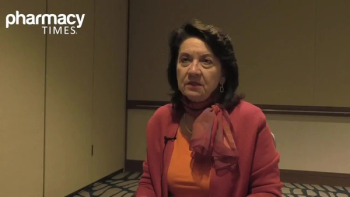
White-Coat Hypertension: A Closer Look
Everything you need to know about WCH from diagnosis, treatment, and a review of the literature.
Health care professionals are likely familiar with the phenomenon known as white coat hypertension (WCH). Within the past 10-20 years there has been considerable debate over the clinical and practical significance of this condition and whether or not it’s indicative of a long-term problem.
Anecdotally, I remember when we learned about WCH in pharmacy school our instructor was skeptical about its prevalence and significance and instead viewed it more as an excuse patients will present for their uncontrolled hypertension. In reality, the literature suggests this is a much more common and potentially worrisome problem than many people realize.
This article will cover everything you need to know about WCH from diagnosis, treatment, and a comprehensive review of the literature.
Overview
WCH is a condition when blood pressure readings taken in a medical setting are higher than when they are taken in other settings, such as the home. This is believed to occur in some individuals due to increased anxiety or stress experienced during a medical visit.1
The 2017 ACC/AHA blood pressure guidelines identify 3 predominate forms of hypertension:
- Sustained: occurs when blood pressure is elevated both in the health care and non-health care setting
- Masked: occurs only when blood pressure is elevated in non-health care settings
- White coat: occurs only when blood pressure is elevated in health care settings2
WCH can be problematic because if not identified, it may lead to overtreatment in patients that may not actually require medication therapy. Additionally, patients with WCH typically require closer monitoring as they are at a higher risk of progressing to sustained hypertension.
Although most people attribute WCH to occurring during a doctor’s office visit, certainly it can be an issue for pharmacists taking blood pressure in the retail, hospital, or clinic setting.
History
WCH was first described in the literature in 1896 by Scipione Riva Rocci, an Italian internist, pathologist and pediatrician who is best known for his invention of an improved version of the mercury sphygmomanometer.
It wasn’t until 87 years later in 1983, however, that WCH was quantitatively researched for the first time. Researchers discovered the physical appearance of a physician was associated with an immediate increase in a patient’s blood pressure and heart rate, with levels peaking several minutes after the start of the visit and remaining high throughout the duration of the visit.1
Prevalence
The exact prevalence of WCH is still up for debate due to varying diagnostic criteria and blood pressure cut-off readings. Both the 2013 European and 2017 ACC/AHA blood guidelines approximate a prevalence of 13%;1-2 however, a recent review reported that between 30%-40% of patients who are diagnosed with hypertension according to their office blood pressure measurement alone have normal out-of-office blood pressure.1
Research suggests that there is a higher prevalence of WCH in females, nonsmokers, and with increasing age. Additionally, the incidence of WCH converting to sustained hypertension is 1% to 5% per with a higher incidence of conversion in those with elevated blood pressure, older age, obesity, or black race.2
Diagnosis
The 2017 ACC/AHA blood guideline addresses appropriate diagnostic criteria for WCH. When suspected, diagnosis can be made through the use of out-of-office and self-monitoring of blood pressure. This can be accomplished through 2 primary methods: ambulatory blood pressure monitoring (ABPM), which involves a wearable device that obtains out-of-office blood pressure readings at set intervals, typically over a 24-hour period and home blood pressure monitoring (HBPM) which obtains a record of out-of-office BP readings taken by a patient.
In treatment naïve patients with an office blood pressure ≥130/80 mmHg but ≤160/100 mmHg after 3 months of lifestyle modification and when WCH is suspected, ABPM or HBPM is recommended. If there is a daytime reading <130/80 mmHg with either method then a WCH diagnosis is confirmed. Notably, although ABPM is generally accepted as the best and most accurate out-of-office measurement method, HBPM is often the more practical approach in clinical practice.
When attempting to diagnosis a patient with WCH it’s important to keep in mind the WCH effect appears to predominately systolic-related; pure diastolic WCH is exceedingly rare.3
Evidence on Long-term Health Risks
A number of studies have identified a small increase in risk of cardiovascular complications or all-cause mortality in patients with WHC. Additionally, WCH is a well-defined risk factor for developing sustained hypertension.1,2
One of the first large scale studies conducted on the topic of WCH was the PAMELA study, which started in 1990. The study enrolled more than 1400 individuals aged 25-64 years and compared clinical blood pressure, home blood pressure, and ambulatory blood pressure. At the initial evaluation, 16.1% of patients were found to meet criteria for WCH and after 10 years of follow-up, 42.6% of those with WCH developed sustained hypertension.4
In 2016, researchers conducted a meta-analysis of 14 studies and more than 29,000 patients to further explore the prognostic significance of WCH. The mean follow-up period in the studies was 8 years and the mean patient age was 59 years. The study found a small, but statistically significant, increased incidence of cardiovascular events in WCH patients vs normotensive patients (6% vs 4%; OR = 1.73; P=.006). However, there was a much lower risk of cardiovascular events when comparing WCH patients vs those with sustained hypertension (5.7% vs 11.4%; OR = 0.40; P<.001). Additionally, there was a significant increase in cardiovascular disease mortality in WCH patients vs normotensive patients (4% vs 1.2%; OR = 2.79; P<.001); however no statistically significant difference was noted for all-cause mortality (12.1% vs 7.7%; OR = 1.50; P=.21).5
A more recent study published April 2018 in New England Journal of Medicine looked at a cohort of less than 64,000 people in Spain to look at the associations of blood pressure measured in the clinic and 24-hour ambulatory blood pressure with regards to all-cause and cardiovascular mortality. The study found there was more than double the risk of all-cause and cardiovascular mortality in those with WCH compared to those with normotension (HR = 2.24; p<0.001); the strongest association was found with masked hypertension.6
Management
Current blood pressure guidelines state there is no data on the risks and benefits of treating WCH. When WCH is identified, lifestyle modification is recommended as a first course of therapy. Additionally, since there may be an increased risk of developing sustained hypertension, an annual ABPM or HBPM is recommended to detect disease progression.
Pharmacologic therapy is generally not recommended for treating WCH although it may be considered in individuals at high or very high cardiovascular risk, due to the presence of multiple risk factors, type 2 diabetes mellitus, renal dysfunction, or markers of target organ damage and cardiovascular disease.2,7
Healthcare professionals should be mindful of ways to strengthen the relationship with their patients to help decrease patient anxiety and stress levels at medical visits. The literature suggests three evidence-based methods to achieve this goal: trust, empathy, and communication. For example, research indicates that both affective and instrumental communication are predictive of patient outcomes including as patient satisfaction, patient adherence, and health-related outcome.1
Additionally, patients should be encouraged to take their own blood pressure readings at home. This not only helps limits some effects from WCH but can also provide insights for patients to better understand the effect of their diet and other lifestyle factors on their blood pressure.
Bottom line
WCH is a real and perhaps under-stated condition. The cardiovascular morbidity and mortality associated with WCH appears to be slightly higher compared with normotension but well below the risks associated with sustained HTN. Patients should be counseled on the importance of home blood pressure monitoring.
References
- Cobos B, Haskard-Zolnierek K, Howard K. White coat hypertension: improving the patient—health care practitioner relationship. Psychol Res Behav Manag. 2015; 8: 133—141.
- Whelton PK, Carey RM, Aronow WS, et al. 2017 ACC/AHA/AAPA/ABC/ACPM/AGS/APhA/ASH/ASPC/NMA/PCNA Guideline for the Prevention, Detection, Evaluation, and Management of High Blood Pressure in Adults. J Am Coll Cardiol. May 2018, 71 (19) e127-e248; DOI: 10.1016/j.jacc.2017.11.006.
- Bloomfield D, Park A. Decoding white coat hypertension. World J Clin Cases. 2017 March 16; 5(3):82-92
- Mancia G, Bombelli M, Facchetti R, et al. Long-term risk of sustained hypertension in white-coat or masked hypertension. Hypertension. 2009;54(2):226—232
- Briasoulis A, Androulakis E, Palla M, et al. White-coat hypertension and cardiovascular events: a meta-analysis. J Hypertens. 2016 Apr;34(4):593-9. doi: 10.1097/HJH.0000000000000832.
- Banegas JR, Ruilope LM, de la Sierra A, et al. Relationship between Clinic and Ambulatory Blood-Pressure Measurements and Mortality. N Engl J Med. 2018; 378:1509-1520 DOI: 10.1056/NEJMoa1712231.
- Grassi. G. White-coat hypertension: not so innocent. European Society of Cardiology. Vol. 14, N: 26 - 21 Oct 2016.
Newsletter
Stay informed on drug updates, treatment guidelines, and pharmacy practice trends—subscribe to Pharmacy Times for weekly clinical insights.


















































































































































































































